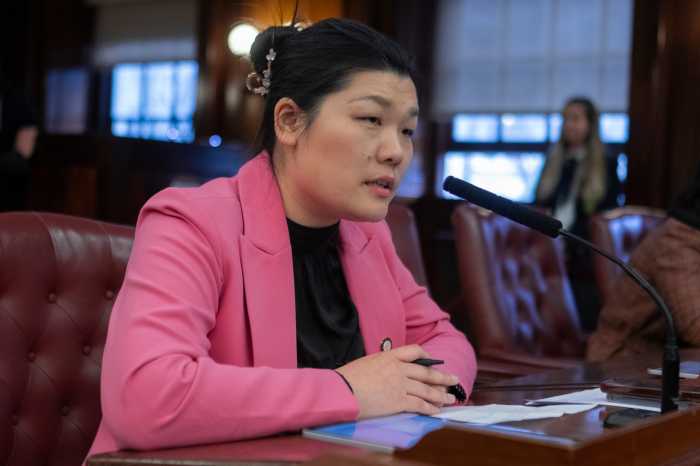When Gordon Davis took over as New York City Parks Commissioner in 1978, the city’s greenspaces had endured years of being victimized by the fiscal crisis and vandals.
Davis is widely credited with helping revive the ailing system with a series of bold moves, including decentralization of its administration, creating the Urban Park Rangers and helping form the Central Park Conservancy.
Earlier this week, Davis sat down with current Parks Commission Mitchell Silver at an event to discuss the state of parks — then and now — and to celebrate a treasure trove of photographs from 1978 that were recently discovered.
In an unusual move, Davis hired several New York Times photographers, who were out of work at that time due to the city’s newspaper strike, to take the photos. Many of those images are on display now at the Arsenal Gallery in Central Park.
Davis spoke with amNewYork about those challenging times in New York City.
What do you see now when you look at these photos from 1978?
I was just getting a little bit of a sense of taking risk and doing things a little differently. They (photographers) approached me and said they wanted to see the spirit of the city. I took a deep breath, gave them some money and off they went.
They were pictures of decay and destruction, but you saw the smiling faces. I didn’t know where the story was going when I first saw them. But in 2018, you knew the story. They became pictures about spirit and resurrection, not pictures of people playing in screwed up parks.
Do you have a favorite photo in this collection?
When (the Parks Department) sent them over, I started crying. I looked at the picture of the guy standing at Bethesda Fountain. That day was the first time there was water in Bethesda Fountain in five years.
When you see New York City’s parks now, do you feel some sense of satisfaction that they are in so much better shape?
These things are relay races, not moments in time. All of the commissioners who came after me played significant roles and so did every mayor. The level of funding and the level of resources kept going up and up. When I see parks now I don’t think, “You started this, you created all of this.” It’s still going and you constantly have to recreate. I learned how quickly things fall apart. It doesn’t take long.
Using private donations and creating conservancies in Central Park and Bryant Park helped revive them. But some have argued too many public-private partnerships give the city a pass from properly funding its parks system.
I had been to police busts in Bryant Park. They would arrest 200 people and they would be back in the park before I returned. The pendulum may have swung too far with all the BIDS (business improvement districts) and too much power being delegated to semi-autonomous private entities. But at the time that was not the problem. The problem was, how do you solve Bryant Park. How do you make a dent in Riverside? It was a different issue.



































